Have you been hearing that slow drip from your leaking shower head for a while now? Your shower head may not be old or defective if it leaks, but this is not always the case.
In most cases, the reason is that water isn’t flowing freely from the spout. An example would be solder in the pipe or something lodged inside.
This is causing the water to back up and pour out of the shower head because there is something impeding it from flowing to the spout.
A plumber’s snake or a speedometer cable can be fed up through the tub drop if this is what is causing the shower rise.
As you feed it, the blockage is loosened by the twirling. Make sure the tub spout is flushed before reinstalling the valve. If there is a blockage in the tub spout, be sure to check it.
If the water doesn’t flow as quickly out of the spout as it flows through the valve, then it is probably experiencing a “shower rise.”
When this happens, water backs up and flows out of the shower head. Several factors can contribute to this:
- To get to the spout, another material was used instead of copper or galvanized pipe.
- 90-degree angles can exist in more than one place.
- There is a gap between the valve and the tub spout, which does not fall within the rule of 8″ to 18″.
- You may have an upside-down valve.
- Alternatively, corrosion could be causing the same problem inside the pipe.
A plumber may be needed if none of this helps. Unfortunately, you cannot fix this situation yourself once the shower is installed and the wall is closed.
Understanding the Causes of Water Leakage in Shower Heads
Your shower head may not be old or defective if it leaks, but this is not always the case. It is essential to look at two types of symptoms to determine what needs to be done:
1. Water Is Dripping From The Shower Head While It Is On
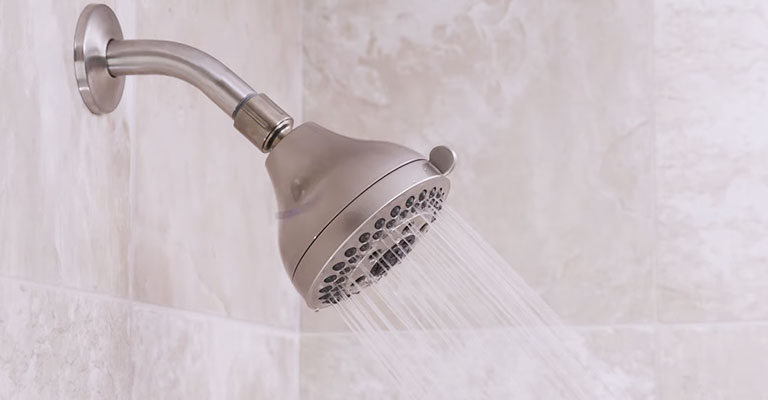
In this case, there’s a problem with your showerhead’s connection. There can be several areas on your shower head that can leak, depending on the type.
It’s usually easy and inexpensive to fix these problems yourself. Shower heads leak most commonly from the following areas:
- The swivel or threads of the fixed shower head leak
- There is a leak at the connector of the handheld showerhead
- There is a leak at the connection of the shower hose
- Leaking at the threads or swivel of the shower head holder
Water typically squirts out of one of these areas when you turn on your shower head, but most of it comes out of your main showerhead.
2. Water Is Dripping From The Shower Head Even When It Is Not Running
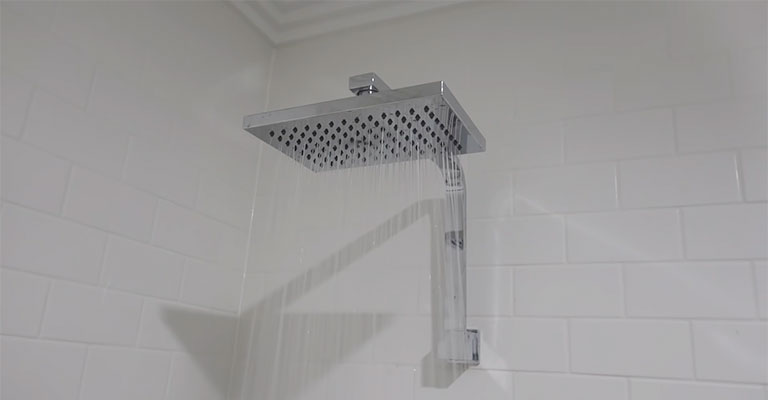
There is no connection between this issue and the shower head if you’re experiencing it. Rather than a leaky shower valve, the problem is a faulty shower cartridge inside.
As well as controlling water volume, temperature, and pressure, the shower cartridge sits inside the shower handle.
Water can leak out of your shower head or tub spout when the cartridge goes bad, even when the valve is closed.
If you are performing this type of repair, you will need to shut off the water supply to your house and work on your rough plumbing.
If you are not comfortable with larger plumbing tasks, it is always recommended to hire a licensed plumber. Providing one size fits all solutions for these types of repairs is impossible.
There are several brands of shower valves available, such as Delta, Moen, Kohler, and some old obsolete ones. It is more challenging to fix a leaking shower valve faucet than fixing a leaking shower head.
Manufacturers repair valves differently and provide different parts with their valves. Therefore, before you begin any repair work, you should research the type of product you own.
Here Are Some Steps For Fixing A Leaky Showerhead
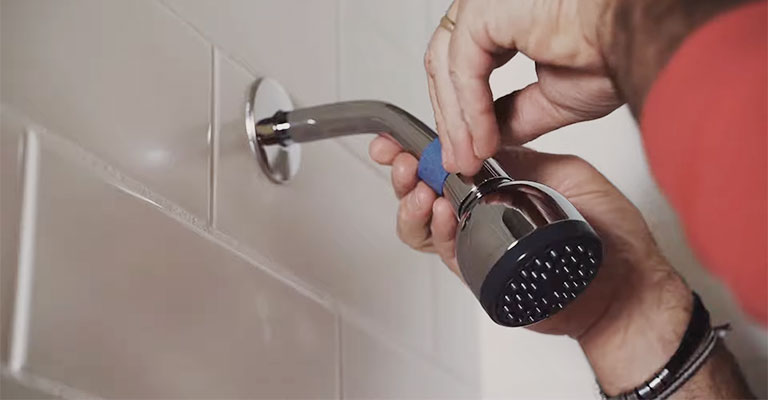
In some cases, it may be better to upgrade your showerhead rather than fix a leaking showerhead. However, here are some steps you can try before then.
1. Identify The Leak – According to the type of shower head you have and the leak’s location, you will need to determine where the leak is coming from.
2. Make Sure Your Water Is Shut Off At The Shower Valve – you do not want the water pumping out while working on the repair!
3. Get Rid Of The Old Shower Head – Use a pair of pliers or a wrench to loosen the old shower head if it is stuck on the shower arm. When using your tools, wrap the threads with a cloth to prevent them from getting chewed up.
4. Look At The Shower Head For Any Damage – If you find any damage to the threads or any part of the shower head, hose, or holder, you will need to purchase a new replacement. Our article ends with a discussion of your best options.
5. Tape That Has Worn Off Around The Shower Arm Must Be Removed – It will typically be wrapped around the shower arm.
You can remove it by peeling it off the arm and wiping it down with a soft cloth and warm soapy water. Shower arms that are damaged or corroded should be replaced.
6. Make Sure The Shower Head’s Face Is Clean – Make sure the shower head’s face and nozzles are clean. If scale and soap have built up on the surface of the head and in the nozzles, it’s a good idea to remove them.
For best results, soak the shower head for 30 minutes to an hour in a mixture of white vinegar and water and then rinse it with water. The longer you soak it, the heavier the buildup.
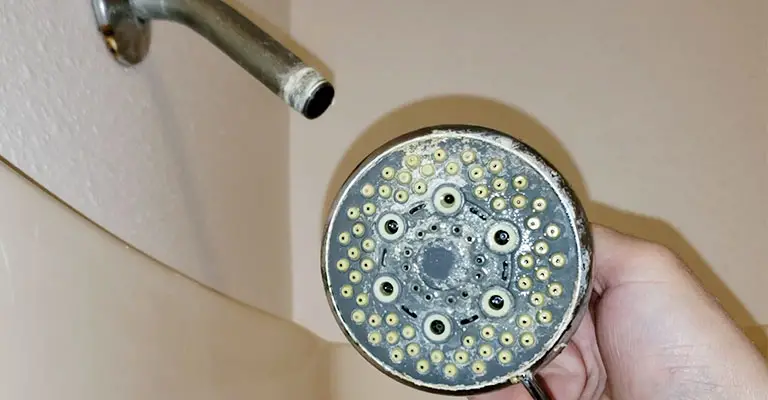
7. Remove Any Shower Head Washers Inside The Head Or Accessory – If you notice any leaks in the shower head, hose, or holder, you need to remove all shower head washers.
Small flathead screwdrivers or paper clips can be used to remove the shower head washers. Ensure that any debris or lose thread seal tape has been removed.
8. Clean Or Replace Your Shower Head Washers – these are available at any hardware store for a couple of bucks and fit all standard showerheads, hoses, and holder brackets.
Your leaking shower head should be fixed if you follow these steps. However, we can help you if that’s not the case.
When The Tub Spigot Is Used, Why Does Water Pour Out Of The Showerhead?
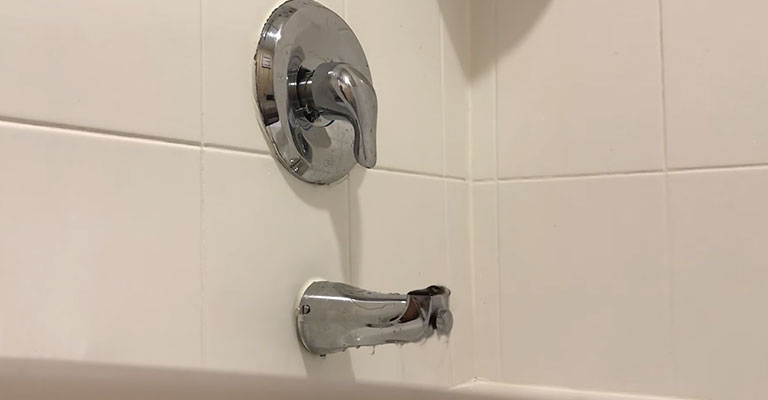
The problem is likely caused by either a restriction in the system or a problem during installation. You can fix it by following these steps.
- Ensure no obstructions are blocking the tub spout and remove it to inspect it. When you turn on the water, see if the showerhead produces water; if not, the tub spout is the problem. Remove any obstructions in the tub spout and replace them if necessary.
- Ensure that the installation uses the correct type of pipe. For example, IPS (Insulated Galvanized Iron Pipe) ½” or Copper pipe (IP) ½” can only be used from the tub port of the valve.
- Likewise, ½” copper or galvanized iron pipe would need to be replaced if PEX or CPVC was used from this connection.
- Take a measurement between the spout of the tub and the valve. There should be at least six inches of tub spout below the valve, but not more than eleven inches. Measurements that do not meet these criteria can lead to this problem.
- The tub spout and the tub port should be connected with one elbow. You will need to eliminate multiple elbows if there are numerous elbows.
- Water flow needs to be unrestricted if any transitional fittings are used. It is important to inspect the valve body. You would need to reinstall it if it was installed upside down.
- It is common for valves to have the word “up” printed on them. The flow director (diverter) in a two-handle model should be inspected. It may be necessary to reverse the water supply according to the location.
When The Shower Is On, Why Does Your Faucet Leak?
The problem is common. The shower is running due to one of the tub faucets leaking water, and the shower head is also running.
This problem can cause a bad shower experience because it reduces the water pressure in the showerhead.
Because of the low pressure, bathing may take longer, wasting water as the water pours out of the tub faucet. A faulty diverter valve is to blame for your faucet leaking when all of the water is supposed to go up to the showerhead.
Water is diverted from the tub spout to the showerhead through this part. There is no need for this problem to occur, and it can be resolved.
However, if you are adventurous, you may be able to do the repair yourself. Alternatively, you can hire a plumber.
Final Words
Cleaning the shower head and handle is a good idea before fixing the leak. Resolving some of the shower issues may also be possible by removing built-up residues and minerals.
Nevertheless, a new accessory can be a cost-effective repair only for the damaged part. As a result, it is sometimes surprising to discover more issues when disassembling a product.
Whether your shower arm is calcified, your hose is stiff, or your shower holder is sagging, it’s time to replace it.






